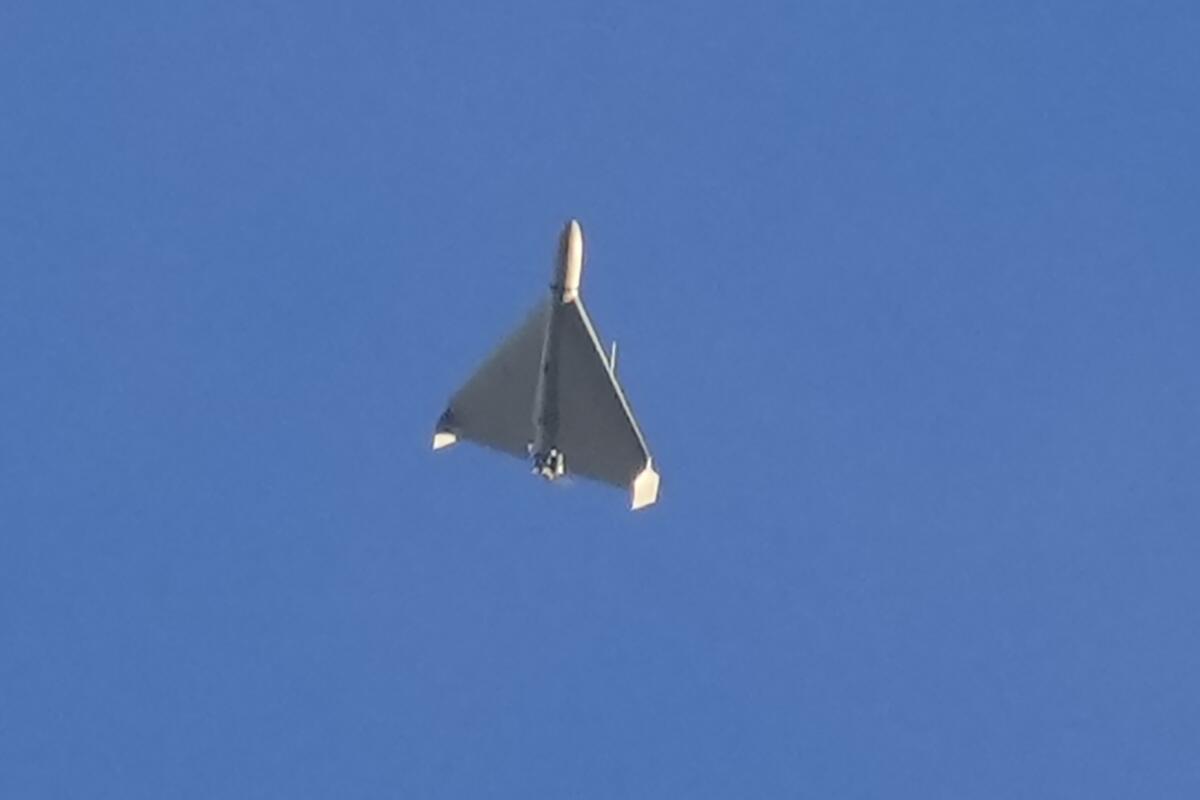Killer drones vie for supremacy over Ukraine

They are precise, small in size, able to effectively penetrate air defenses when fired in groups and, above all, they’re cheap.
In Russia’s invasion of Ukraine, killer drones have cemented their reputation as a potent, cost-effective weapon that can seek out and destroy targets while simultaneously spreading the kind of terror that can fray the resolve of soldiers and civilians alike.
They’re also quickly surpassing missiles as the remote weapon of choice. Known as “the poor man’s cruise missile,” the flying death machines can flood any combat theater much more cheaply.
Russia’s unleashing of successive waves of the Iranian-made Shahed drones over Ukraine has multiple goals — taking out key targets, crushing morale, and ultimately draining the enemy’s war chest and weapons as they try to take them out.
How do wartime drones work?
The Shahed drones that Russia has rebranded as Geran-2 are what are known as loitering munitions, which are also in Ukraine’s arsenal.
Packed with explosives, they are preprogrammed with a target’s GPS coordinates. They can then loiter overhead and nosedive in for the kill. That’s reminiscent of Japan’s World War II-era kamikaze pilots who would fly their explosive-laden aircraft into U.S. warships and aircraft carriers during the war in the Pacific.
According to the Ukrainian online publication Defense Express, which cites Iranian data, the delta-wing Shahed is 11½ feet long, 8 feet, 3 inches wide and weighs approximately 440 pounds. It’s powered by a 50-horsepower engine with a top speed of 114 mph.
The drone has previously been used in Yemen and in a deadly oil tanker attack last year, said Behnam Ben Taleblu, senior fellow at the Washington-based think tank Foundation for Defense of Democracies.
And while its range is about 621 miles, drone expert Samuel Bendett, with the CNA think tank, said the Shahed is being used in Ukraine at much shorter ranges. That’s because its GPS guidance system — which is vulnerable to jamming — isn’t very robust.
Shaheds are known to have been controlled via radio under the Iranians. Whether Russia is capable of doing the same in the Ukrainian theater is unclear.
Because they are cheap and plentiful, Russia is able to flood Ukraine with Shaheds without risking the lives of pilots or putting sophisticated aircraft at risk.
In Monday’s attack on the Ukrainian capital of Kyiv, the city’s mayor, Vitali Klitschko, said 28 drones made up waves of successive attacks. Fired from a truck launcher in rapid succession, the drones can fly low and slow, better able to avoid radar detection.
They don’t technically swarm, Bendett said. That kind of sophisticated drone technology exists — when multiple unmanned aerial vehicles communicate with one another. Instead, the Shahed is simply launched in bunches in order to overwhelm defenses, particularly in civilian areas. “They know that most will not make it through,” he said.
Their power to terrorize exceeds their explosive might, however.
According to Mykola Bielieskov, a research fellow at Ukraine’s National Institute for Strategic Studies, the Shahed only carries an 88-pound explosive charge, which pales in comparison to the explosive force that a conventional missile’s 1,050-pound warhead can deliver at a much longer range.
“It is difficult to hit serious targets with such drones,” Bielieskov said.
Small punch but low cost
At $20,000 apiece, the Shahed is only a tiny fraction of the cost of a full-size missile. For example, Russia’s Kalibr cruise missiles, which have seen widespread use in eight months of war, cost the Russian military about $1 million each.
At such a low cost, the Shahed has been used effectively to saturate targets, whether a fuel depot or infrastructure and utilities such as power or water stations. Russia has used them with precision in combination with intelligence drones to attack Ukrainian artillery, Bendett said.
Despite its small size, the Shahed’s explosive charge appears powerful enough to do damage. In Monday’s attacks, one drone struck an operations center while another slammed into a five-story residential building, ripping a large hole in it and collapsing at least three apartments, resulting in the deaths of three people.
Bielieskov said Russia is now directing Shaheds at civilian rather than battlefield targets because Ukrainian forces have “learned how to fight them effectively,” intercepting a little more than half of them.
With no immediate end in sight, the conflict’s financial burden will weigh heavier on Moscow, which isn’t receiving billions in weapons transfers from Western nations like Ukraine is. As the conflict essentially becomes one of attrition — who can withstand that human, material and financial burden the longest — finding cheaper but still potent weapons will be key.
“Shahed-136 is a cheap version of a cruise missile, which Russia can’t produce fast,” Bielieskov said.
Taleblu said Russia will probably continue to boost its long-range strike capabilities with Iranian drones.
“This should raise alarm bells for Europe and the world,” he said.
Russian officials haven’t issued any data about the number of missiles fired during the conflict, but Ukraine’s defense minister recently said Russia has used most of its high-precision missile arsenal — from 1,844 on the eve of Russia’s invasion to 609 by mid-October.
A war of nerves
The incessant buzzing of the propeller-driven Shahed drones — dubbed “mopeds” and “lawnmowers” by combatants — can induce terror for anyone under its flight path because no one on the ground knows exactly when or where the weapon will strike.
Ukrainian President Volodymyr Zelensky seized on the drones’ terror element, posting on social media: “The whole night, and the whole morning, the enemy terrorizes the civilian population.”
Bielieskov conceded that Shahed drone strikes stir up fears that Ukraine’s air defenses are inadequate. But he said their use — even in large numbers — can’t reverse Ukraine’s battlefield gains.
More to Read
Sign up for Essential California
The most important California stories and recommendations in your inbox every morning.
You may occasionally receive promotional content from the Los Angeles Times.










